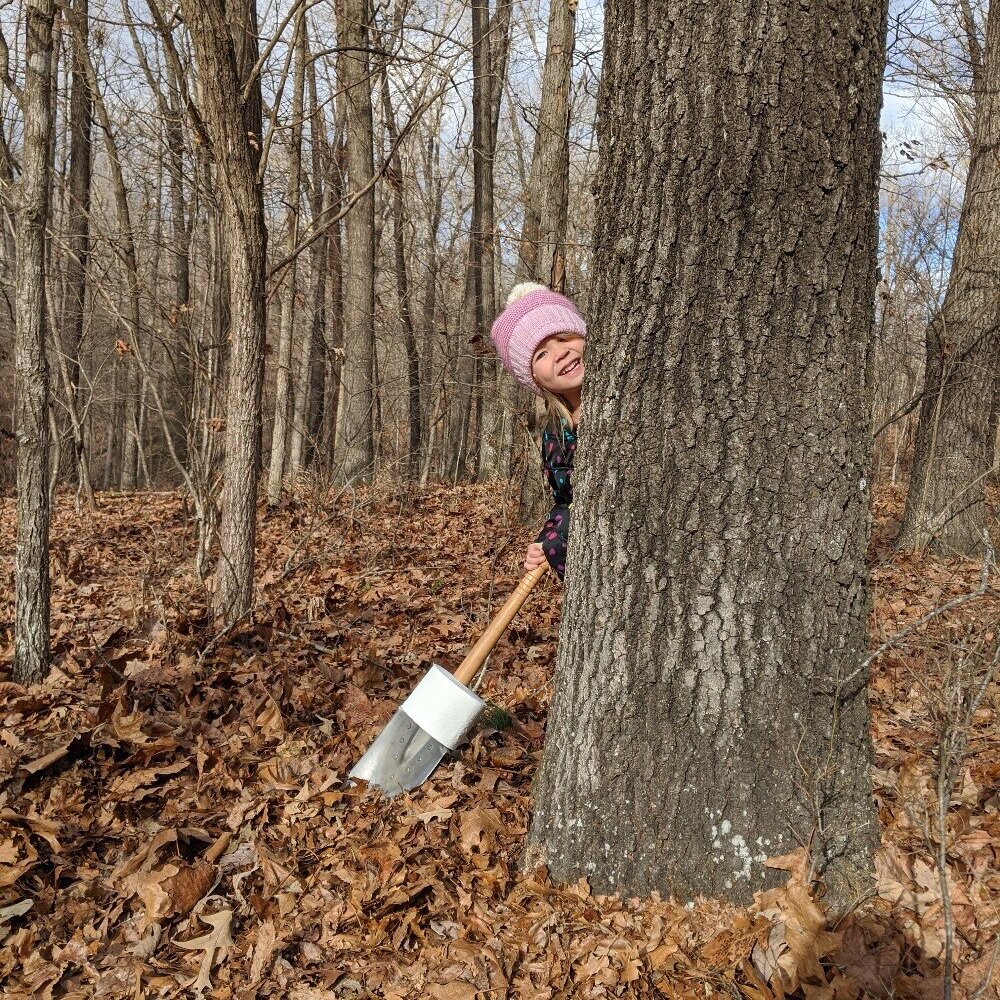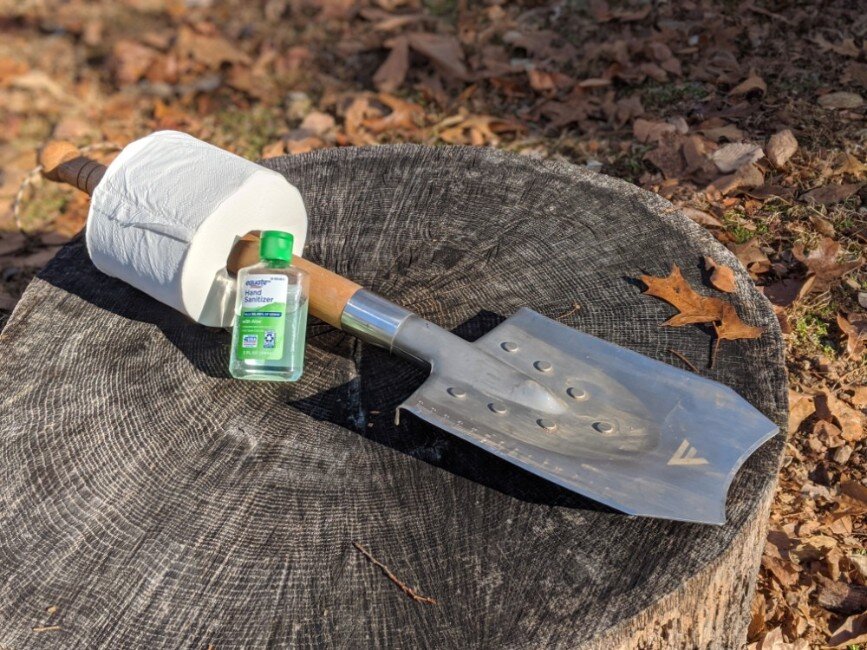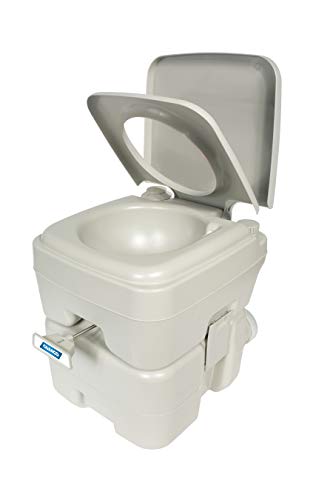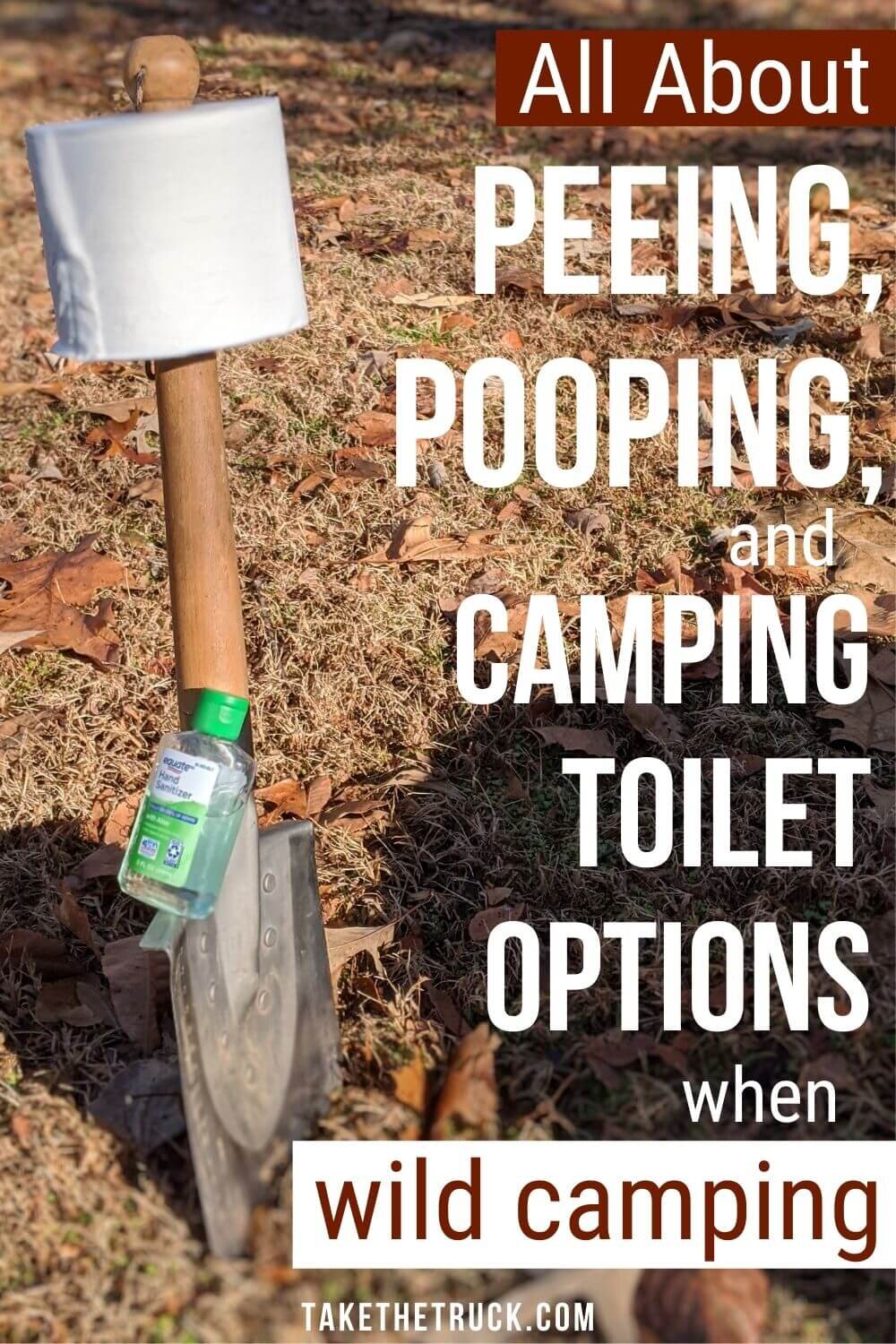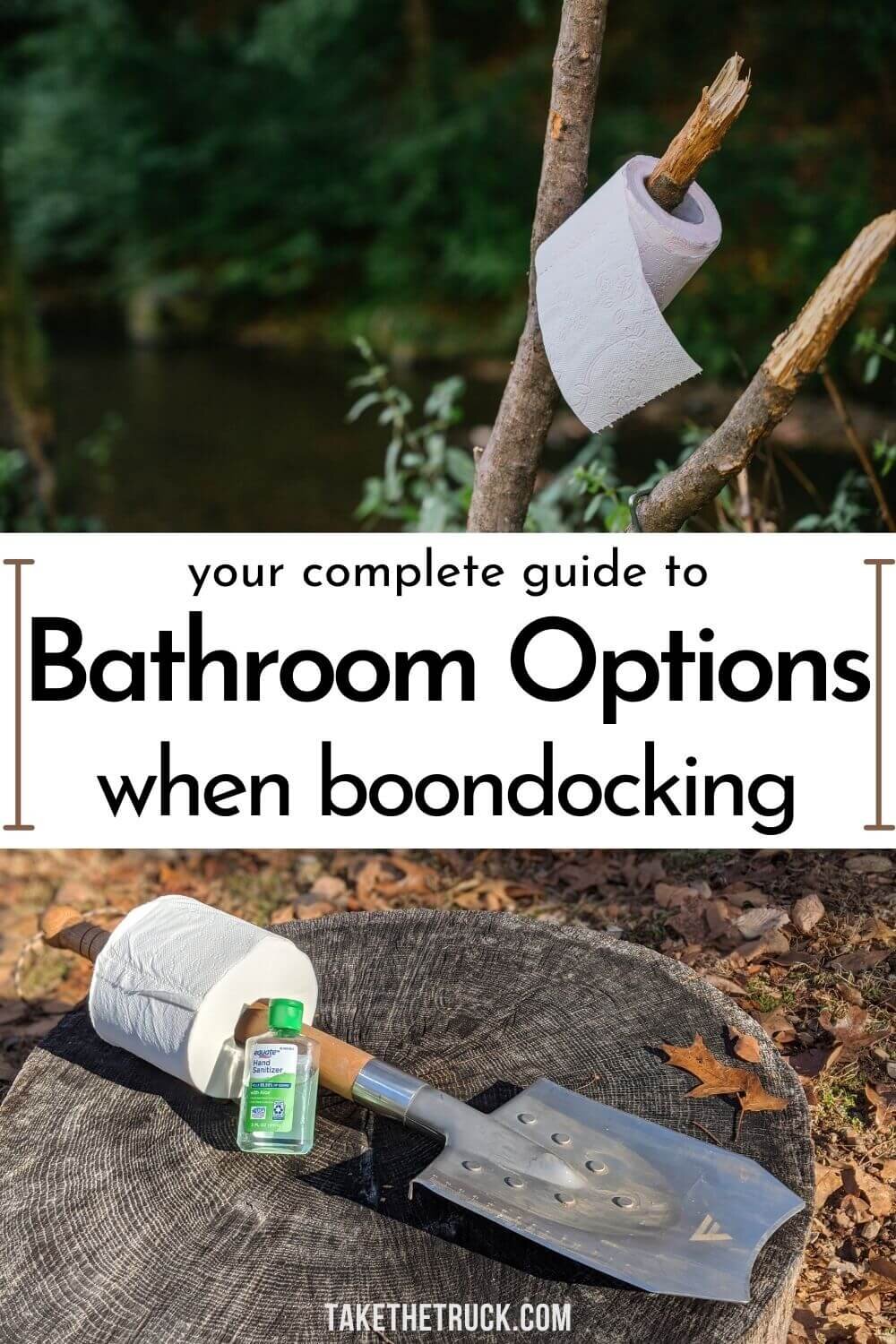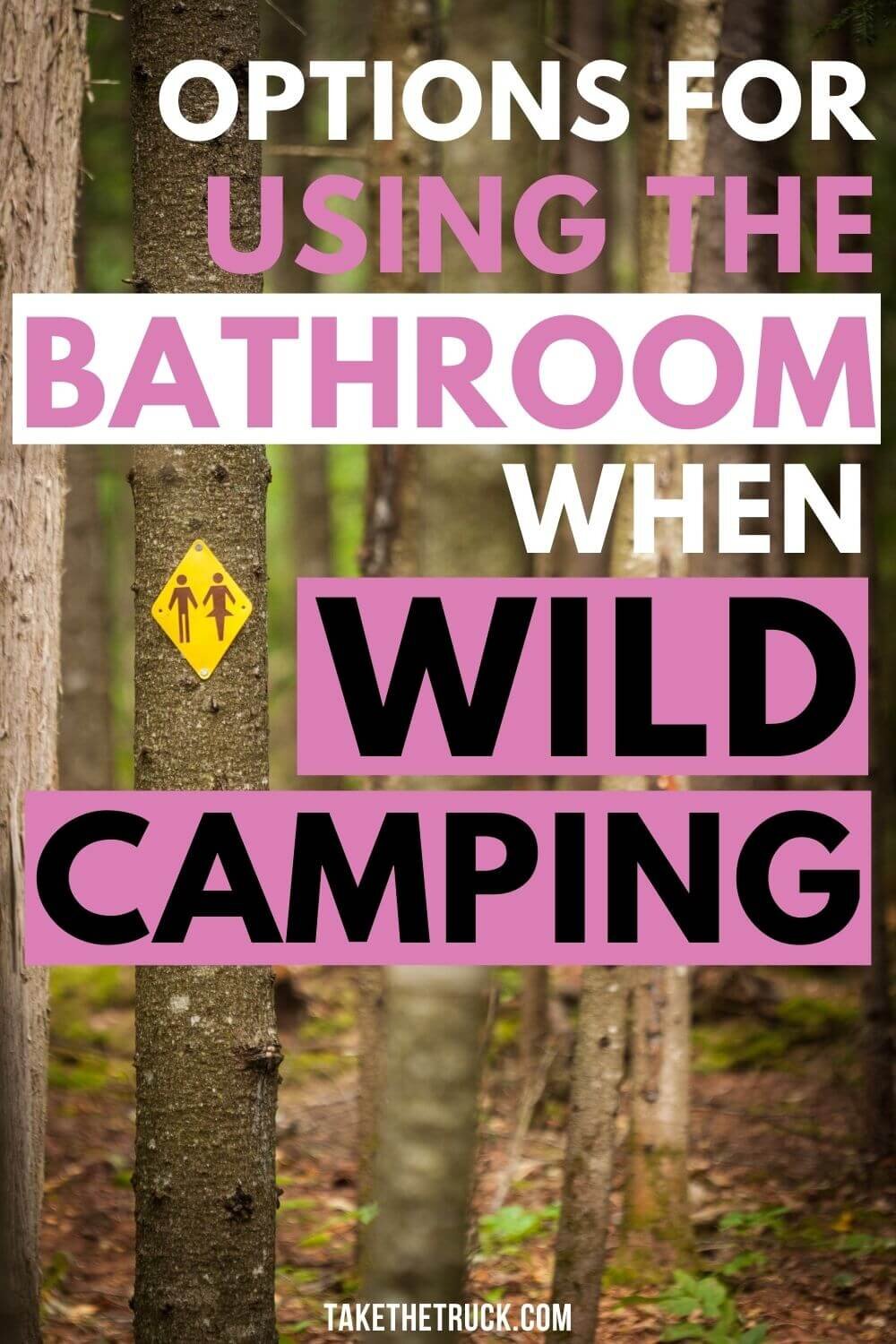Complete Guide to Using The Bathroom While Camping
Where and how do you use the bathroom?! This question has come up so many times when discussing our overland travel and primitive camping lifestyle with friends and family that we figured it’s probably something most people are curious about but perhaps too embarrassed to ask.
So in this post, we’re going to tackle the entire topic of using the bathroom while camping head on! Everything from the proper way to dig a cathole, to “wag bags” and portable camping toilets, to accessories and etiquette, and every smelly thing in between.
Now obviously, if there is a public restroom, pit toilet, or outhouse available, use it! But we’re going to focus on what to do with dodo when primitive camping, hiking, or exploring in the backcountry - far far away from the niceties of flush toilets. (If you’re wondering about why we camp like this in the first place, check out our post all about boondocking.)
*(This post contains affiliate links. This means we may receive a small commission, at no additional cost to you, if you make a purchase through a link. See our full disclosure.)
CAMPING BATHROOM METHODS AND BEST PRACTICES
First, let's discuss the primary methods and best practices for using the bathroom while wild camping, hiking, or otherwise exploring in the wilderness. If you’re not already familiar with the Leave No Trace Principles, we highly recommend reviewing all of them to ensure you’re properly managing your impact on the environment - Principle 3, specifically, addresses human waste management in the outdoors.
Camping Bathroom Method 1: Dig A Cathole
A cathole is nothing more than a hole dug in the ground to bury your solid human waste in. Ugh, sounds gross right?! But it’s actually a very convenient, effective, and even sanitary way to use the bathroom while wild camping - when done properly.
How to dig a cathole:
Look for soil that is soft, loamy, and easy to dig, then utilize a shovel, hand trowel*, or even a stick to dig a hole 6 to 8 inches deep and approximately 8 inches by 8 inches wide
Ensure your finely crafted cathole is at least 200 feet from any body of water, trail, or campground
Never use the same cathole twice, and if camping with a group make sure they are located far apart from one another
While best practice is to pack out your toilet paper, all toilet paper will break down readily in a properly dug and positioned cathole. However, we highly recommend carrying a good biodegradable camping toilet paper*, as it will break down at a faster rate than standard wood fibrous toilet paper
Refill the hole with the original dirt once finished and cover with leaves, pine needles, or other nearby organic debris
Immediately wash your hands or use hand sanitizer* to prevent the spread of bacteria
When NOT to use a cathole:
Always check local guidelines (we simply inquire at the local ranger station) to ensure that there are no legal or ethical restrictions to this method. Some examples would be:
Areas of sensitive soil composition, plant, or animal life
High elevation, desert, and alpine areas
Areas that see high amounts of human foot traffic (like Moab, UT)
So if you’ll be camping, hiking, or exploring in these areas, your best bet is to use the next method - pack it out.
Camping with Kids Tip:
If you have multiple younger children along while primitive camping, it can become a full-time job digging catholes for each of them or trusting that they can do it correctly on their own. So instead of a cathole, we recommend digging a latrine. A latrine is like one long cathole, dug at the same 6 inch depth and however long is necessary.
It can then be used by the kids multiple times by moving down the length of the latrine each time they need to go - all they have to do is cover their “doodoo” and toilet paper with a little dirt after each use.
Then when you break camp an adult can ensure the latrine is refilled with the original dirt and covered with leaves or other organic debris. Make sure you select a site that meets all the same criteria as a cathole, and try to ensure it’s in a slightly elevated location away from low areas / valleys that would see a lot of water run-off during heavy rain.
Camping Bathroom Method 2: Pack It Out / Wag Bag
Packing your #2 out may sound pretty gross, but like most things, there is a right and a wrong way to do it - and thankfully companies have stepped in to help make the process easier, more sanitary, and better for the environment.
But what’s a wag bag?!
Well at its most basic, a wag bag is simply a bag that you poo into in order to seal and easily carry out your human waste. For those of you with dogs, you’re already pretty familiar with the process of carrying your pet’s poo out in this manner. But a wag bag is designed specifically for human use.
What to look for in a quality wag bag kit:
Each kit should include a spill-proof/puncture-resistant bag, a liner bag, individual-use toilet paper, and antiseptic wipes.
It should also contain non-toxic chemicals that safely absorb, deodorize, and neutralize solid human waste in a manner that renders the waste safe to dispose of in a standard trash can (i.e. landfill approved).
While we prefer and recommend the original Wag Bag* kits (primarily due to cost - especially if bought in bulk), we have also used the Restop 2 - Solid & Liquid Waste Bag* with good results.
How to use a wag bag:
Open the outer puncture-resistant pouch
Remove the inner liner bag, toilet paper, and antiseptic wipe
Hold the plastic liner bag under and around your hips to catch the waste
Do your business
Then deposit your toilet paper and use the cinch straps to close the plastic liner
Finally seal the liner bag in the puncture-resistant outer pouch using the ziplock closure
Immediately wash your hands or use hand sanitizer* to prevent the spread of bacteria
Congrats! You now have an odorless sealed bag of poo you can safely deposit into the next trash can you find!
Camping Bathroom Method 3: Portable Camping Toilets
If digging cat holes or using a wag bag is too far outside your comfort zone, a portable camping toilet might be the best solution for you. They can offer all the familiar comforts of your toilet at home, and come in a huge array of choices; everything from a simple 5-gallon bucket camping toilet to complete self-contained models with flush.
And if privacy is a concern where you’ll be adventuring, you can utilize a pop-up privacy/shower tent* in combination with a portable camping toilet to act as your dedicated bathroom station.
Let's take a look at the pros and cons of some of the most common portable camping toilet options out there (and if you’re wanting a more info on choosing the best one, be sure to check out our post covering The Best Portable Camping Toilets.
5 Gallon Bucket Camping Toilet:
The most budget-friendly option is the good ol’ 5 gallon bucket camping toilet. It’s simply a standard 5 gallon plastic bucket with a toilet seat attached. You add a liner bag to the bucket, a scoop of gelling powder, a roll of toilet paper on the bucket’s handle, and you’re ready to do your business!
While there are plenty of DIY 5 gallon bucket camping toilet options out there, we highly recommend purchasing one of the pre-made options - as you’d likely spend almost the same amount of money (and significantly more time) buying supplies for a DIY build. But if DIY is your jam, by all means, go wild!
What you’ll need:
Luggable Loo* - this is a good quality cost effective model and comes complete with a 5 gallon bucket and toilet seat lid - or if you already have a 5 gallon bucket lying around you can just get the lid*.
Biodegradable Portable Camping Toilet Liner Bags* - these are compostable and one of the more cost effective options.
Gelling Powder* - this Poo Powder is made by the same manufacturer as the original Wag Bag. It will both gel the liquid waste (urine) making transport easier and neutralize the solid waste, speeding the breakdown and making it safe for disposal in the trash.
Pros:
Inexpensive
Easy to use and clean
Somewhat transportable - if you decide you need to reposition your camp toilet for whatever reason, you can simply pick it up by the handle - waste and all - and move it. However, do note that these ARE NOT sealed and should never be transported with waste in them in your vehicle
Waste Disposal - the landfill approved biodegradable bags combined with the poo powder can be disposed of in a standard trash can
Cons:
Bulky - if you’re car or truck camping and traveling, especially for extended lengths of time, space in your vehicle is precious and a 5 gallon bucket takes up a lot of space
Potentially Uncomfortable - a 5 gallon bucket is only about 13” in diameter, so depending on the individual this may be a bit cramped, even for a camping toilet
Weight capacity is restricted to 300lbs or less
Folding Camping Toilet:
This is by far the most compact camping toilet option out there. It operates similarly to the 5 gallon bucket camping toilet in that you utilize a liner bag or wag bag. But in this case it is suspended beneath the toilet seat, and sometimes includes a mesh support net to help support the liner bag.
Alternatively, you can remove the mesh support and use these in combination with the cat hole method (where permitted) to avoid the whole squatting-over-a-hole-while-going-number-2 challenge!
What you’ll need:
Cleanwaste Portable Toilet* - while there are several options and manufacturers out there, we’ve found this is one of the best for both ease-of-use, durability, and comfort. Plus it’s made in the U.S.A!
Wag Bags* or Liners* - the Cleanwaste Portable Toilet is made by the same company that made the original Wag Bag and they’re fully compatible with one another
Pros:
Compact - about the size of a regular briefcase when collapsed
More comfortable than the 5 gallon bucket
Up to 500lb weight capacity
Waste Disposal - the landfill approved bags can simply be disposed of in a standard trash can
Cons:
Expensive - compared to other options this is one of the more pricey
Not transportable - due to the nature of the hanging-bag design, we would not recommend re-positioning this around camp without first removing and disposing of the waste
Self-Contained Portable Camping Toilet:
A self-contained portable camping toilet - complete with flush and a sealed waste compartment - will offer the most comfortable (dare we say luxurious) camping bathroom experience of all.
It consists of a toilet seat with two separate holding tanks below - one containing fresh water for flushing, and the other for waste. Once the waste holding tank (“black water tank” in RVer lingo) is full you simply detach it and dispose of the waste in an available RV dump station or pit toilet once convenient.
What you’ll need:
A Self-Contained Portable Camping Toilet - the sheer number of options out there can be a bit overwhelming, but we feel the Camco Portable Travel Toilet* offers a great overall value for its size and feature set, and we’ve always had good experience with Camco’s products during our previous RV travels.
This model has a 2.5 gallon easily-refillable fresh water tank (with each flush using about a ¼ gallon), and a detachable 5.3 gallon holding tank for waste. It measures 16.38”H x 13.75”W x 16.13”D
Pros:
Familiarity - for those that are just not comfortable with doing their business in a hole or a bag while out wild camping, this option offers the closest facsimile to your toilet at home
Ease-of-use - this option offers by far the lowest barrier to entry - no bags, no digging, no squatting. Just do your business, and flush
Fully transportable - with fully sealed holding tanks, you can transport this from campsite to campsite until it’s time to empty the tank
Cons:
Bulky - while not substantially larger than a 5 gallon bucket camping toilet, depending on your intended use and vehicle it may be too large to work in your camping setup
Water Consumption - this is a HUGE down-side, at least for us. The places we most enjoy exploring and camping in our truck camper are usually remote and often water is scarce or our supply is finite, so having to sacrifice several gallons of water to refill our camping toilet is no bueno
Waste Disposal - requires frequent access to an RV “black water” dump station or pit toilets for proper waste disposal, which can be an issue if you’re remote camping in the wild without access to either
Dig a cathole, use a wag bag, or bring along a portable toilet - these are the 3 primary methods for using the bathroom while wild camping or boondocking, at least when it comes to dealing with #2. But what about pee?
How to Pee While Camping and Hiking
While the process of taking care of #1 while primitive camping without amenities is fairly straightforward for males, it takes a bit more finesse for females. But we’ve found some camping bathroom accessories and tricks that make the process a whole lot easier on the ladies.
Regardless of your gender, you always want to follow a couple best practices:
Always ensure you find a secluded location to relieve yourself, away from other campers and hikers - nobody likes walking up on that OR being walked up on!
It’s best to still follow the Leave No Trace guidelines of being 200ft from any trail, campsite, or water source when possible
For females, the de facto method for peeing while hiking and wild camping is to dig a small cathole, drop trow, squat, and go. If using this method, try to go in an area with soft or sandy soil or pine needles to help prevent splashback, and always bury your toilet paper in the cathole or better yet pack-it-out.
But dropping your pants and squatting isn’t really ever ideal! Doing this often requires ditching any hiking packs, it can be rather revealing, and it isn’t always easy to get just right.
So, we recommend investing in a good Female Urination Device for using the bathroom while camping and hiking.
These “devices” are simply a strategically shaped or funnel-like piece of plastic that enables you to pee standing up! But not all female urination devices are created equal - some can be uncomfortable, awkward, or even messy to use. After some research and weighing of pros and cons, Lindsey landed on the pStyle*, but there are a lot of options* out there.
The primary benefits to this model is that it’s easy to clean, it’s toilet paper free, it works for both adults and kids, and you don’t have to pull your pants down in the back to use it.
The P-style has worked great for our family over the years, and we always keep it with us on any outdoor adventure.
If you frequently have to pee in the middle of the night, but don’t want to routinely get shoes on and haul yourself out of your truck bed camper or tent, we’ve heard these expandable bottles designed to hold pee* are lifesavers!
OTHER CAMPING BATHROOM CONSIDERATIONS
Inclement Weather
If you’re wild camping and rain or snow is in the forecast it can put a damper on a lot of your activities, and it can be especially challenging when nature calls.
We recommend hanging a tarp over a designated camping bathroom space if you know there is a chance for inclement weather. We always carry one of these Sea-to-Summit muti-purpose silnylon poncho tarps*, but any tarp will do as long as it keeps you out of the elements while doing your business.
Hygiene
One of the primary goals of following the Leave No Trace principles is to prevent the spread of bacteria and disease amongst both humans and animals alike.
That‘s why it’s so important to properly dispose of your human waste. It’s also important to always wash your hands or use hand sanitizer after using the bathroom while camping.
So keep a bottle of hand sanitizer with your camping bathroom supplies - it’s a good alternative to washing your hands when you have no access to soap and water. Plus it’s easy for little ones to use too.
Pets
When hiking, traveling, or camping in the backcountry it’s very important to manage your pet’s waste with care so that it doesn’t impact or disturb the native wildlife.
You can do this by simply treating your pet’s waste as you would your own - pack it out, or bury it in a properly dug cathole.
So we recommend always carrying a hand trowel*, dog waste bags*, and hand sanitizer when adventuring outdoors with your furry companions.
FINAL THOUGHTS ON USING THE BATHROOM WHILE CAMPING
While not our favorite part of our outdoor adventures, having the knowledge and gear to use the bathroom while wild camping is a very critical aspect of enjoying our overland travels and truck camping adventures.
Hopefully this guide to using the bathroom while camping has provided you with enough information and knowledge to do your business outdoors with both confidence and tact. However, if you happen to have any questions (or tips!) we didn’t cover in this post please be sure to drop a comment down below!!
And check out our post - Everything You Need to Know About Truck Bed Camping - if you’re curious about any other aspects of camping from a pickup truck.
And as always, thanks for reading, and we’d love for you to SUBSCRIBE!
Related Posts:
Start Wild Camping Like a Pro [16 Boondocking Questions Answered]
Wild Camping Safety & Security Tips: Conquer Your Boondocking Fears
Pin me for later!
Please share this post with fellow campers!

